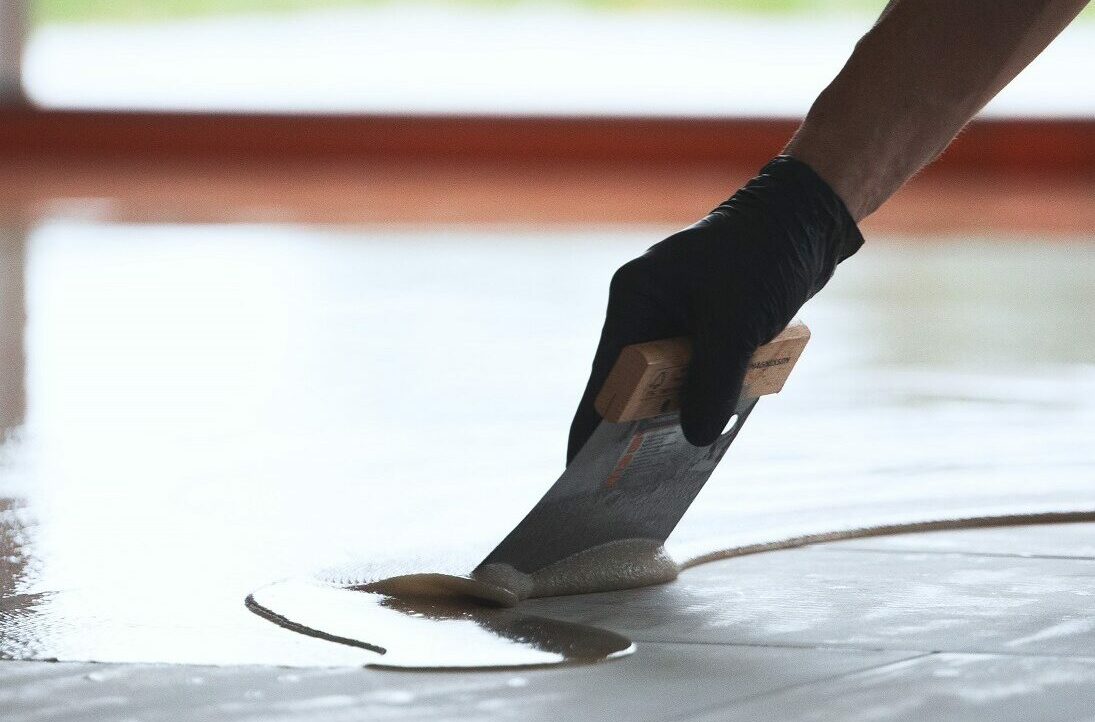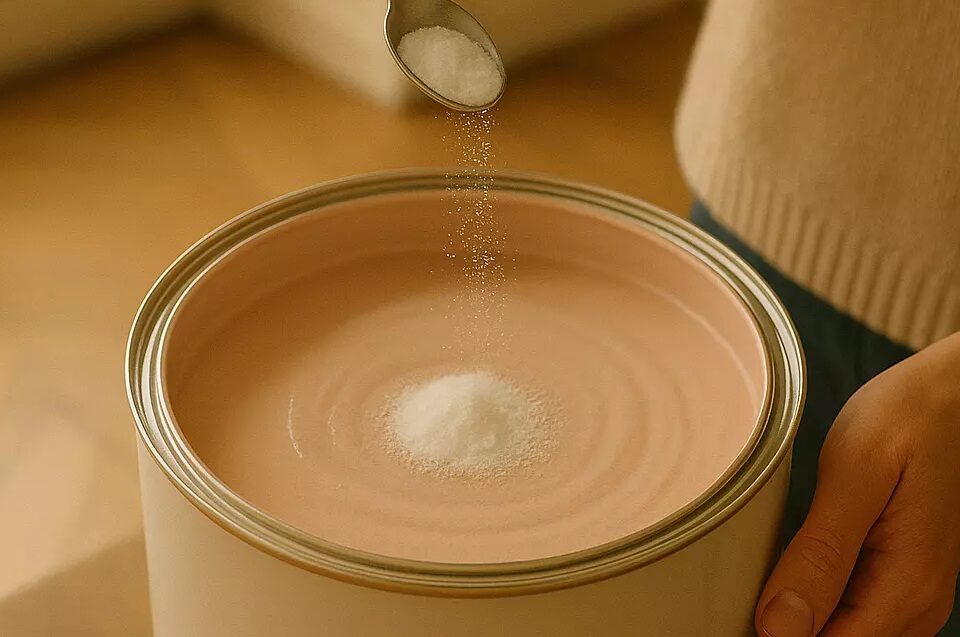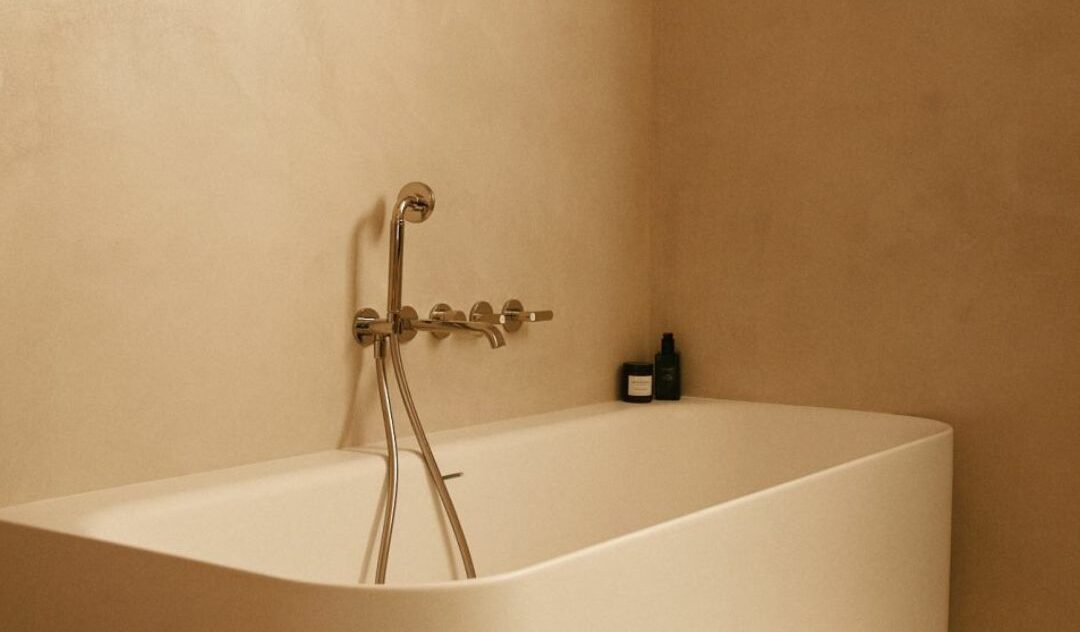Historically, Marius Aurenti was the first to apply millimetre-sized micro concrete over tiles
When Marius Aurenti invented the world’s first concrete capable of coating a floor covering in just 2 mm, it opened up a whole new world of decoration.
This worldwide innovation can be applied to a wide range of surfaces in new construction, including concrete floors, walk-in showers, terraces and furniture, as well as micro concrete over tiles.
Obviously, with such a low thickness, renovation work, especially over tiled floors, was going to be a key market for micro concrete.
If you’re buying a house or renovating a business, restaurant or hotel room, the presence of tiles often brings a style that can’t be combined with contemporary decor.

Tile removal is a complex problem. If it’s glued down, removing the tile will cause a lot of breakage, take a long time and often leave a lot of adhesive residue on the substrate (which is usually a screed).
A mechanical sanding step is then required to level the substrate and remove any organic residues, which may be detrimental to future coatings.
In the case of a floor where the tiles have been sealed, as was the case in the past, the screed is completely bonded to the tiles.
This can lead to considerable pathology when the tiles are removed, as this is a destructive process that can damage the screed, causing severe delamination and, where applicable, damage to the underfloor heating system.
Similarly, covering a tiled floor with another material usually generates height problems.
This will interfere with junctions between rooms in the home or business, requiring the installation of special strips.
Beyond 3 mm, the problems are numerous, and very few materials are suitable.
Marius Aurenti millimetric micro concrete is obviously a revolutionary solution for renovating old tiles, since it can be laid over them without destroying the existing substrate.
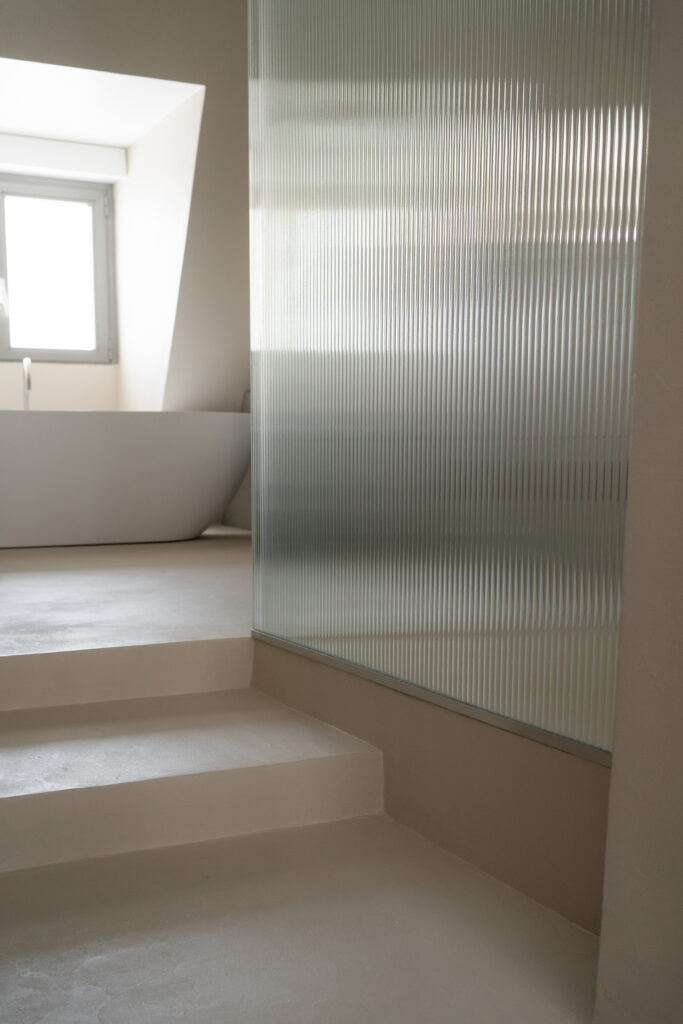
Why choose micro concrete over tiles?
- Visual continuity of cladding by eliminating joints, thus considerably enlarging the space.
- Elimination of joints between tiles making surface maintenance much simpler
- Quick and easy No need to remove the tiles to lay them, which limits the amount of demolition work and the aesthetic consequences, which are not always easy to manage, particularly where skirting boards and joinery are concerned… This means that a project can be completed and back on the road in just 10 days.
- Sustainability and ecology : This avoids the transportation of waste and the recycling of materials in an ecological approach.
- Compatible with underfloor heating Because millimetric micro concrete is a conductive material, it does not affect the performance of underfloor heating systems, whether low-temperature water or electric heating.
Project: Waxed concrete over tiles in a living room.
From floor preparation to application of Marius Aurenti waxed concrete by Passion Service Habitation before application.
FAQ – Micro concrete on tiles
Almost all of them!
Indeed, all ceramic, stoneware, mosaic and faux wood tiles that have been glued down can be covered with micro concrete.
If the tiles have not been glued down, but have been sealed in place, you’ll need to check their adhesion beforehand with the help of a qualified Marius Aurenti professional.
If the tiles are old and very porous, extra care is required.
This applies, for example, to terracotta or porous limestone coverings… These surfaces have generally been previously treated with waxes or oils.
As they are difficult to remove, they will require more extensive sanding.
If the waxes or oils have penetrated too deeply, it may not be possible to apply micro concrete over tiles.
In the latter case, a professional will be needed for a proper diagnosis.
The advantage of using micro concrete over tiles is that it eliminates all the joints between the different tiles.
This doesn’t mean, however, that if there are expansion or separation joints in the house, they can be covered.
In fact, this will allow the screeds and slabs underneath, and sometimes the walls too, to continue to work in line with ground movements and temperature.
A few joints may still be necessary when laying micro concrete over tiles, but the elimination of joints between tiles is truly spectacular.
At Marius Aurenti, waxed concrete over tiles is considered a surface-intensive process.
The minimum thickness of waxed concrete must therefore be 2 mm.
To this must be added the thickness of the epoxy mortar, which will depend on the level to be levelled.
If the substrate is flat, this mortar will be 1 or 2 mm thick.
The waxed concrete will be 2 to 3 mm higher than the existing tiles.
Marius Aurenti considers the application of micro concrete over tiles to be surface-intensive.
For this reason, the minimum thickness of micro concrete must be 2 mm.
To this must be added the thickness of the epoxy mortar, which will depend on the level to be made up.
If the substrate is flat, this mortar will be 1 or 2 mm thick.
The waxed concrete will be 2 to 3 mm higher than the existing tiles.
Renovation work on a tiled floor is a little more extensive than waxed concrete on a new surface.
As explained in the protocol on this same page, this will require prior sanding, followed by the application of an epoxy mortar.
Generally speaking, a job of this type will take between 5 and 7 days to complete, with a further three days drying time for light use and a few days more for intensive use or in a bathroom.
The concept of price in the realization of a micro concrete on tiles is not an easy one to tackle, but here are several aspects that will influence the final price that an expert craftsman will offer you:
– Access to the job site will influence the price, since in big cities it’s more complicated to carry out jobs than in the countryside or small towns.
– The size of the job will strongly determine the price, as a small site often requires just as many steps, and therefore more round-trips in proportion to the surface completed.
– Differences in labor costs between countries will make it impossible to generalize a price.
– The presence of many different surfaces, several small rooms, niches and curves all have an impact on the final price of the project.
After a technical discussion with the Marius Aurenti teams, who will be able to give you a price range based on your surface area, we advise you to have the price specified by estimates drawn up by trained experts.
Prices don’t vary enormously on the same site, depending on the number of craftsmen consulted.
However, this will enable you to refine your budget.
It’s a classic Marius Aurenti micro concrete over tile in the bathroom!
Several jobs are carried out every week in this type of configuration.
Unlike a floor, in a bathroom you’ll need to cover vertical tiles, which is also possible with micro concrete.
Similarly, if in doubt, a liquid waterproofing system can be added prior to the installation of micro concrete in a bathroom renovation if the quality of the waterproofing cannot be verified beforehand.
Marius Aurenti’s micro concrete is therefore compatible with horizontal and vertical surfaces in dry rooms, as well as in wet rooms with the use of Liquid Waterproofing Systems (LWS).
At Marius Aurenti, we consider this surface to be far too dangerous, as there have been problems with the porosity of the joints over time and with adhesion, making this type of work far too risky for a professional.
Experience has also shown us that very few exterior paving slabs meet the standards expected by DTU 13.3.
There are therefore two solutions for people with outdoor tiling: either remove the tiling and return to the slab to lay micro concrete over it, if the substrate is of good quality.
Creating waxed concrete on tiles is surely the most complex exercise in millimetric waxed concrete.
There are packages available so that a professional or an experienced amateur can create his or her own waxed concrete with the help of our tutorials and documentation.
We recommend starting with a small area for someone who is not experienced and, for larger projects, giving preference to a qualified expert.
You need the standard tools for applying micro concrete, plus special tools for sanding and applying epoxy mortar.
Here is the list of tools for micro concrete:
– American knife
– Smoothing machine or stainless steel, plastic 200mm or perfect liss 35 cm centimetres
– Ideally a double-bladed mixer, or at least a single-bladed mixer
– 30 kg scale with 5 g accuracy ideal or small kitchen scale for small surfaces
– Empty 5- and 30-liter buckets
– Yellow and purple soft masking tape (paint)
– Protective tarpaulin
– Water for rinsing equipment and green brite tape for scrubbing!
– Gloves, mask (dust or vapor fffp2 for venis), coveralls, goggles, safety shoes
– Orbital sander and special 40 and 60 grit discs
– Monobrush for floor surfaces with special 40 and 60 grain discs
– Small and large rolls and sleeves
– 2 mm stainless steel rod for clean stops
– Auxiliary heating
– Extension cords
– Paper towel roll
And for epoxy mortar
– Diamond surfacer with
– 6mm notched comb
Marius Aurenti micro concrete is guaranteed crack-free for 15 years.
The substrate is not important.
It is important to check the substrate for cracks beforehand during the substrate diagnosis.
A fiberglass interlining may be recommended by an expert craftsman when making the epoxy mortar.
The advantage of using micro concrete over tiles is that it eliminates all the joints between the different tiles.
This doesn’t mean, however, that if there are expansion or separation joints in the house, they can be covered.
In fact, this will allow the screeds and slabs underneath, and sometimes the walls too, to continue to work in line with ground movements and temperature.
A few joints may still be necessary when creating micro concrete over tiled floors, but this eliminates the need for tile joints and some of the silicone sealants that darken over time and need to be replaced once a year.
After all these years of expertise, here are the floors considered at risk, on which it is not advisable to apply millimetric micro concrete:
- Tiled terrace
- Readitional terracotta
- Tomettes
- Sealed porous stones
- Tile laid on a flat slab
- Bonded or sealed tiles with moisture levels above 4% or significant moisture variations between joints
- Tiles glued to screed
- Glued tiles on wooden panels or other wooden structures
- Tiles bonded to other tiles
- Bonded or sealed tiled floor with delamination over more than 10% of the surface or areas that sound hollow
- Tiles laid on foam or polystyrene foam panels on the floor
- Cracked tiles
Applying micro concrete over tiles to mask existing defects runs the risk of these problems reappearing under the new covering.
Waxed micro concrete should not be used simply to cover up defects.
our online products Waxed Concrete
Marius Aurenti’s Secrets for Successful Micro Concrete on Tiles or Stone
At Marius Aurenti, a specialist in waxed concrete for over 25 years, it’s essential to address the question of what types of tiled or stone floors to avoid before applying millimetric waxed concrete.
Commitment to durability is at the heart of the company’s values.
With 40 years’ experience, it has completed tens of thousands of projects, many of them using micro concrete over tiles.
A network of trained, expert craftsmen helps make renovation projects a reality.
Recommendations for a Successful Renovation
Intensive mechanical diamond sanding is recommended to break up the tile surface and remove cleaning residues, oils and other substances that could reduce the adhesion of the micro concrete coating.
Proper sanding optimizes the durability and finish of the renovation project.
Rely on Marius Aurenti to help make your micro concrete over tile or stone project a success.
Expert craftsmen are on hand to offer advice and quality service.
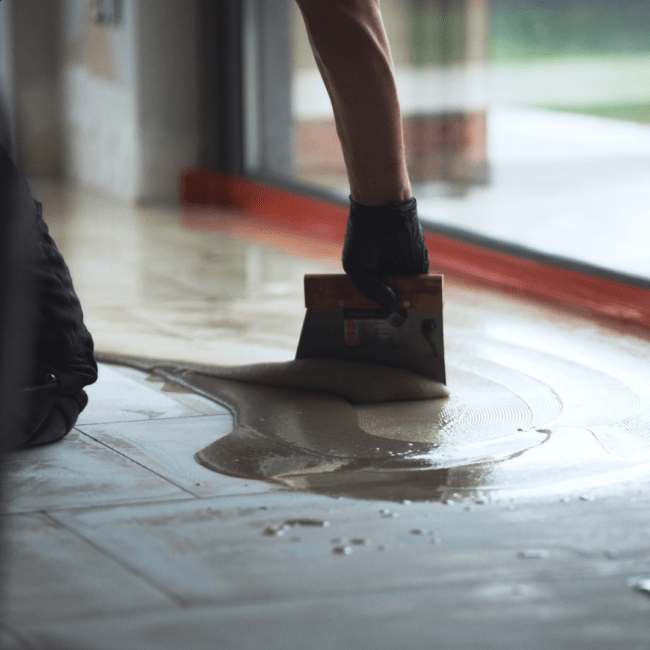
Béton Ciré sur carrelage Teinte Marius Aurenti Fossile IVD
130 m² of Marius Aurenti micro concrete on tiles by Passion Service Habitation teams.
The customer chose Marius Aurenti Fossile IVD for his house in Besançon.
Presentation of the complete upcoming project.
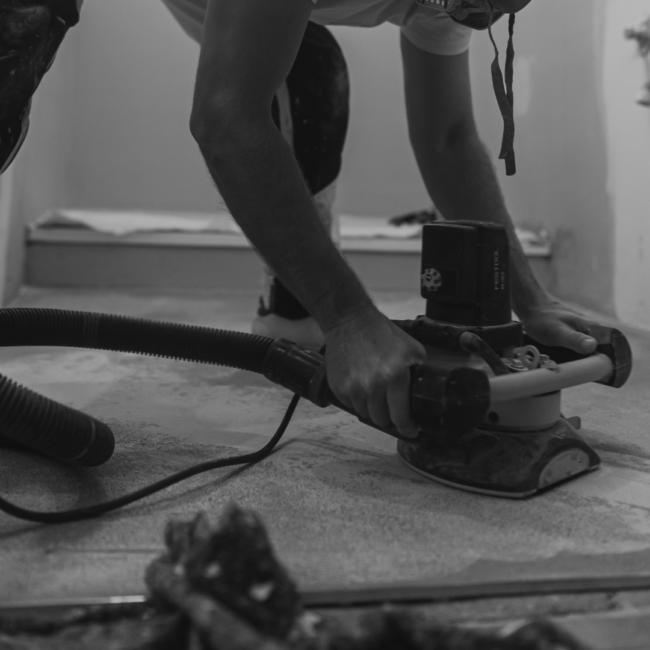
Maison Lacuzon micro concrete on tiles
Application of micro concrete on old floor tiles and wall concrete on new plasterboard for this pretty bathroom.
A Passion Service Habitation project.
Presentation of the complete upcoming project.
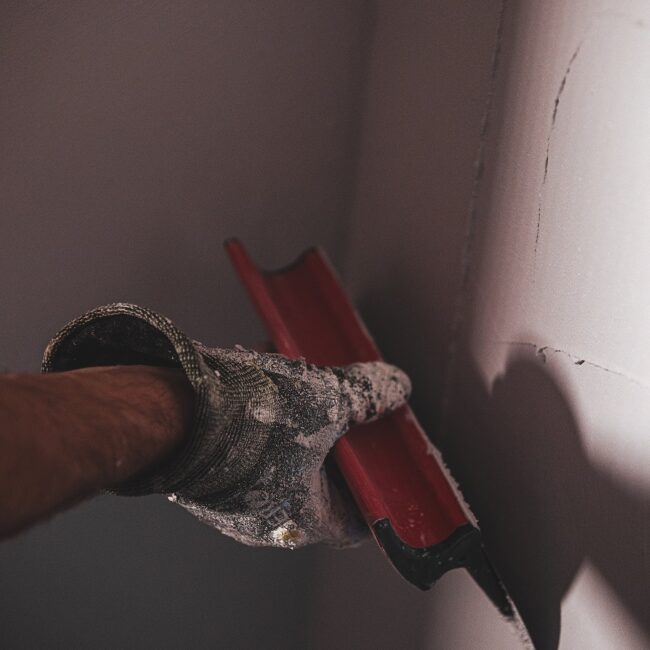
Micro concrete on Château tiles at Lac St-Point
Application of Marius Aurenti micro concrete over old tiles, smoothing of old tiles and waterproofing in bath and shower areas.
A Passion Service Habitation project.
Presentation of the complete upcoming project.
Application procedure on tiles :
- Substrate diagnosis Checking tile adhesion and moisture content. When the work is carried out by a qualified professional, this step is fundamental, as it will decide whether the substrate is suitable for waxed concrete or not. At Marius Aurenti, this protocol is carried out using an acceptance sheet, which has been developed for over 20 years by building professionals, and which guides the experts through this fundamental step.
- Surface preparation Mechanical sanding to ensure an adherent surface. This second step is an obligation in the Marius Aurenti process. Diamond sanding is a fundamental step. It will ensure perfect mechanical adhesion with the future new coating. Obviously, the duration of this step will depend on the surface, but it usually takes one or two days.
- Epoxy mortar application Application of epoxy mortar: Use of an epoxy resin mortar for a solid base. This stage is generally completed in a single day, and requires a drying time that depends on humidity and temperature conditions.
- Production of micro concrete Waxed concrete: Application in two or three coats, tinted in the mass for a perfect finish. Just like on a new floor, or in a bathroom, application is done in two or three coats, generally completed in two days.
- Finishing The application of waxes and varnishes for long-lasting protection. Finishing treatments can involve up to four stages, some of which take up to two days to complete, and require a certain amount of drying time.
Micro concrete on tiled floors inside the home
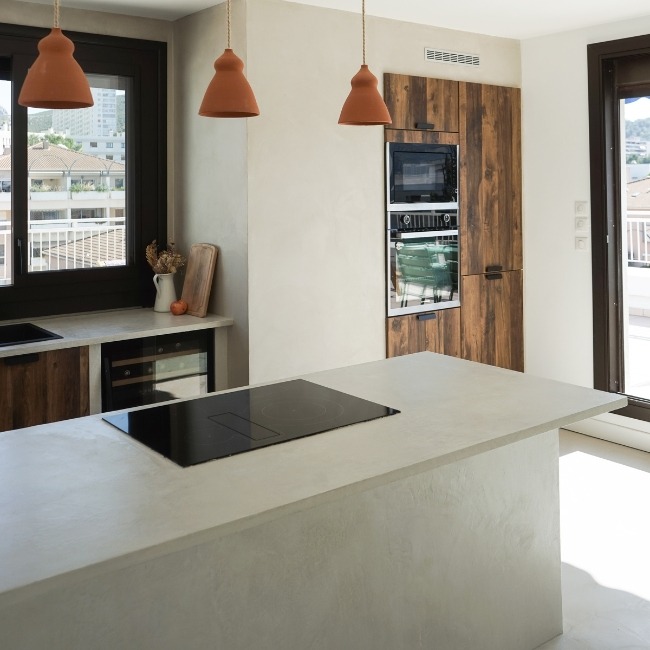
In the kitchen
The kitchen, often exposed to dirt and frequent cleaning, while being a convivial and practical space, benefits greatly from a micro concrete floor, easy to maintain and pleasant to live on.
If you already have a tiled floor in your kitchen, you can easily cover it with concrete flooring.
For further information:
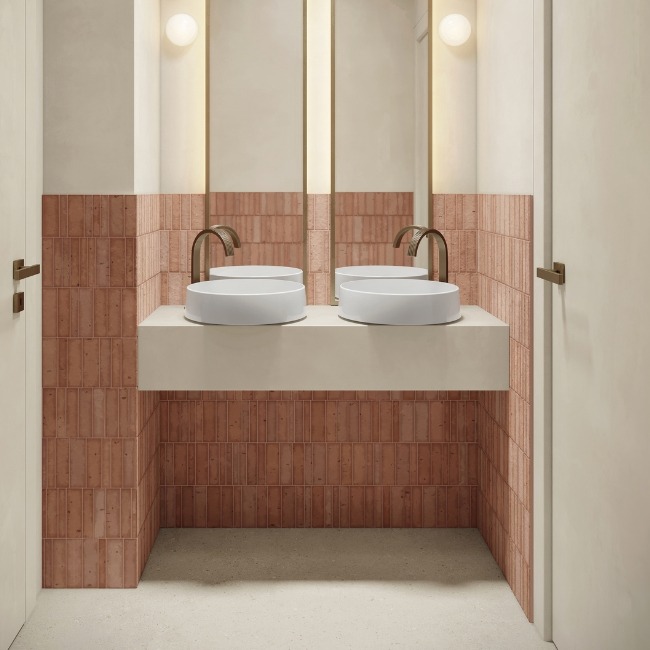
In the bathroom
The bathroom is a place where the cleanliness, ease of maintenance and warmth of concrete are particularly appreciated, as are its soft-touch texture and the variety of shades it comes in, enabling it to harmonize with all decorative styles.
Opting for a micro concrete floor in your bathroom brings a touch of modernity and elegance to your intimate space.
For further information:
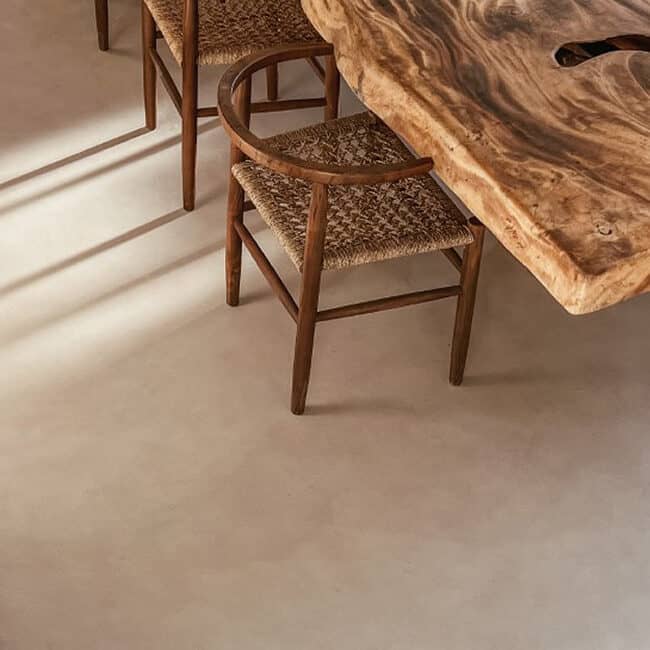
In the living room
Micro concrete reveals its full potential as an exceptional decorative concrete when used as a living room floor covering.
In this often spacious room, it harmonizes and magnifies the space by providing a uniform, seamless surface that often matches the style of the furniture and walls.
Easy to care for, it feels soft and warm to the touch.
For further information:
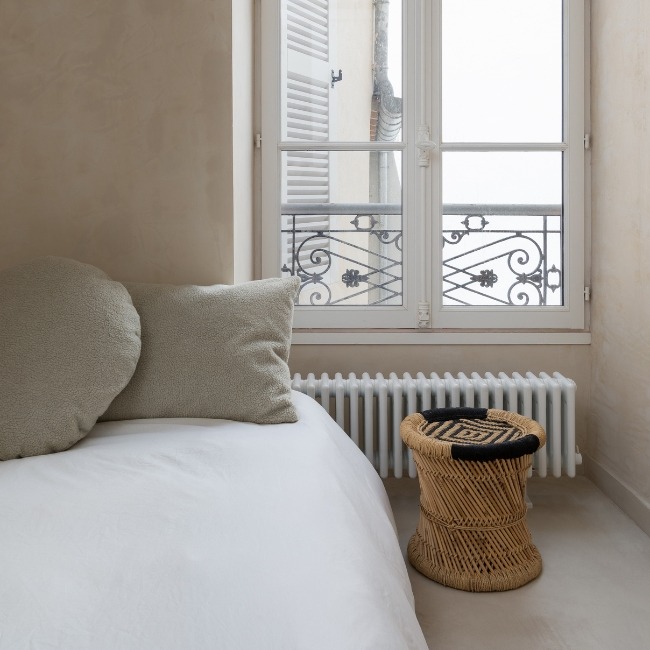
In the bedroom
In a bedroom, opting for a micro concrete floor offers a host of advantages.
The material’s natural warmth creates a comfortable atmosphere in the room, its smooth surface feels soft and sensual to the touch, and its ease of cleaning ensures impeccable hygiene, protecting you from dust mites and the allergies they can cause.
As a thermal conductor, concrete also provides pleasant, efficient underfloor heating.
Find out more:
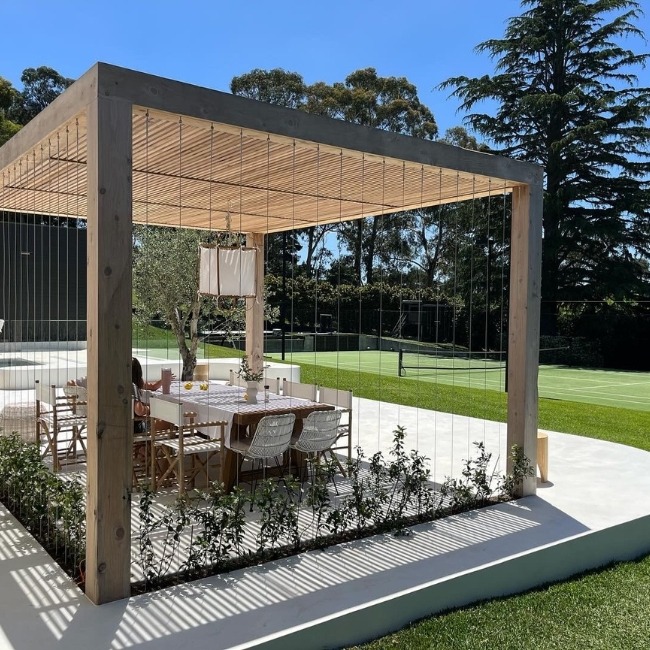
Outdoors
Micro concrete for outdoor floors offers as many advantages, if not more, than for indoor spaces: it’s resistant to weather conditions such as rain and snow, as well as to the sun’s UV rays and temperature variations.
It is protected by a treatment coat comprising a water repellent, an oil repellent, a mineral glaze and a varnish.
Find out more:
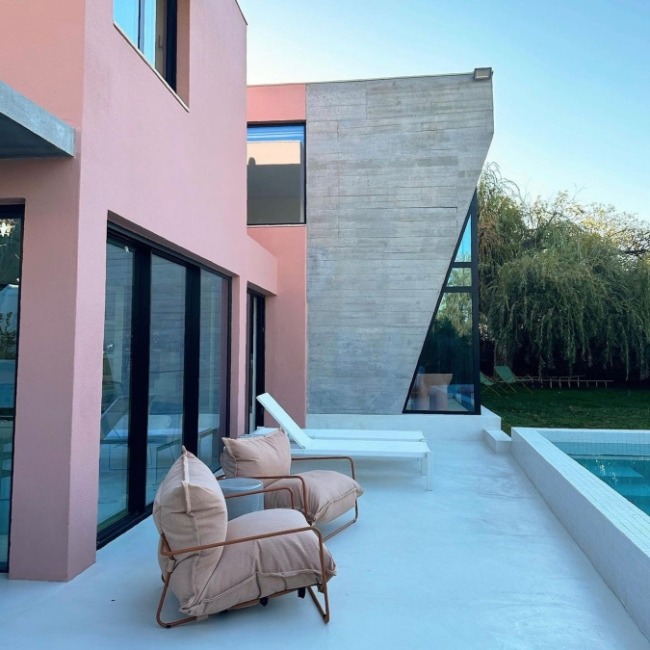
On terraces, pool decks, courtyards and walkways
A terrace floor covered with micro concrete will retain its beauty and cleanliness for a long time, benefiting from reliable protection thanks to its layers of mineral stain and varnish.
Similarly, for a patio, courtyard or driveway floor, micro concrete can be applied directly to an existing concrete slab, benefiting from a water- and oil-repellent finish for optimum durability.
Find out more:
Marius Aurenti micro concrete maintenance products for
Marius Aurenti’s specialized finishes guarantee first-rate protection for materials, while making them easy to clean and maintain with standard detergents or Marius Aurenti’s professional cleaning products.
Béton 71 colors - Marius Aurenti

